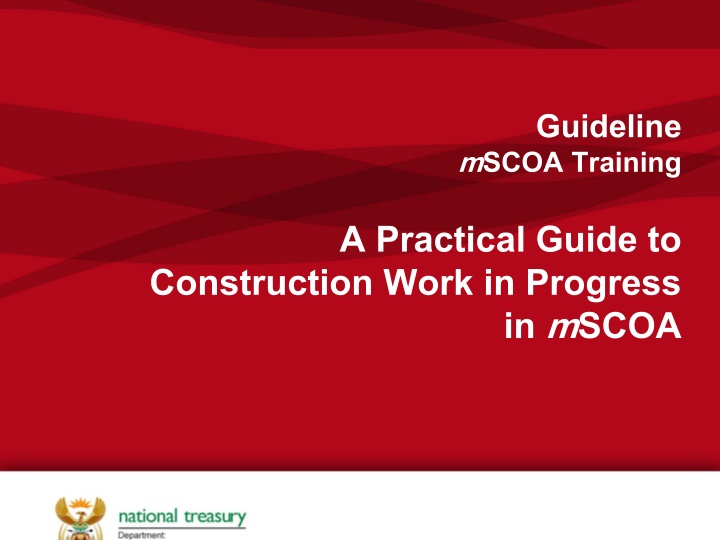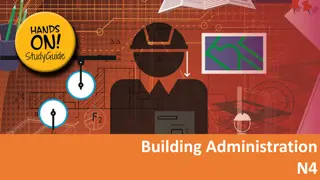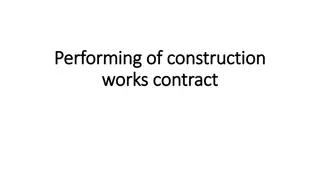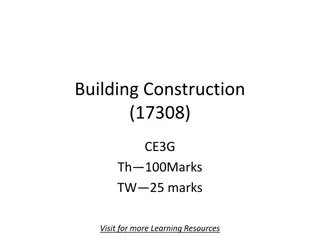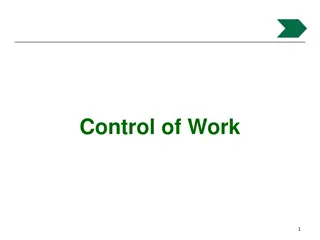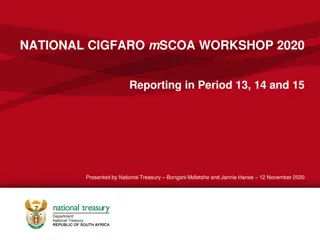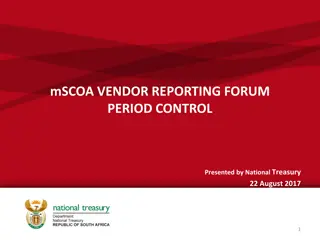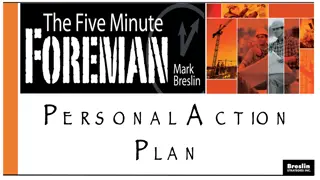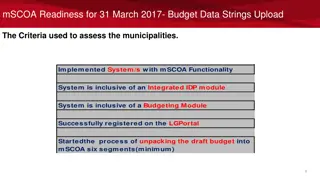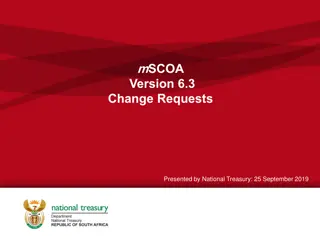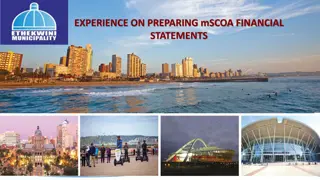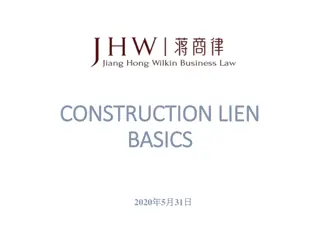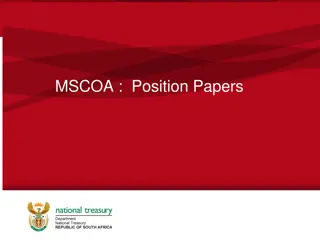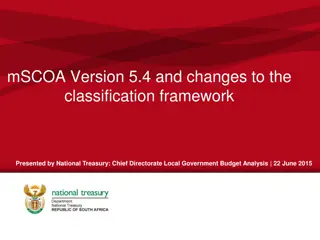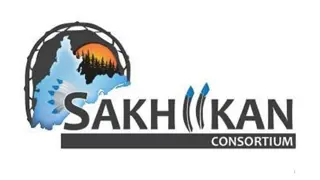Practical Guide to Construction Work in Progress in mSCOA
This practical guide covers essential aspects such as treatment of CWIP, transacting construction work in progress, retention accounting, AFS reporting, and more. Learn about the correct use of mSCOA for effective financial management in construction projects.
Download Presentation

Please find below an Image/Link to download the presentation.
The content on the website is provided AS IS for your information and personal use only. It may not be sold, licensed, or shared on other websites without obtaining consent from the author.If you encounter any issues during the download, it is possible that the publisher has removed the file from their server.
You are allowed to download the files provided on this website for personal or commercial use, subject to the condition that they are used lawfully. All files are the property of their respective owners.
The content on the website is provided AS IS for your information and personal use only. It may not be sold, licensed, or shared on other websites without obtaining consent from the author.
E N D
Presentation Transcript
Guideline mSCOA Training A Practical Guide to Construction Work in Progress in mSCOA
Contents Background Treatment of CWIP Example Transacting of Construction Work in progress Retention Accounting treatment and AFS reporting Componentisation of Assets Recognition of Transfers and Subsidies Benefits of the correct use of mSCOA 2 2
Treatment of CWIP The Project Segment provides the base for the detailed Asset Category Project Capital Operational Default Consist of Infrastructure & Non-infrastructure assets Operational projects consist of expenditure relating to maintenance of infrastructure/non- infrastructure assets, municipal running costs, typical work streams and the creating of infrastructure and non- infrastructure assets that are transferred to a municipality or municipal entity Default caters for transactions that is neither capital nor operational. Capital expenditure relating to immovable assets that are part of a network Default projects include revenue, liabilities and current assets Capital Expenditure relating to property plant and equipment The Item Construction Work in progress will provide the user with the transactions captured linked to a specific Capital Project 4 4
Capital Work in Progress The costs of construction of all Assets is accumulated in Item Assets: Non Current Assets :Construction WIP Outsourced Own labour Inventory At the end of the project the Final Asset Created will be transferred out of CWIP and Capitalised in the correct asset component. Item Assets: Non Current Assets: PPE The Construction WIP is a control account for Construction of assets The Construction WIP account must be reconciled monthly and annually to ensure timeous capitalisation of Assets 5 5
Retention Municipalities are not handling Retention consequently Retention on Construction Contracts must be addressed in the Tender process and the signed Service Level Agreement between contractors and the Municipality. Retention must be accrued with payment certificates provided by a Contractor using the Trade and Other Payables sub system. Retention must be captured per project per Contractor. Retention can only be paid out in the event of a fully completed, signed- off asset after the agreed period in accordance with the contract and after all defects is fixed. Input Vat must be accrued with retention and only paid and subsequently claimed from SARS when the retention is paid. (Systems must make provision for this) 6 6
Accounting Treatment The Accounting treatment provided is a guide to ensure all transactions are captured correctly. Capitalisation happens upon completion, Guidance is given on the financial reporting of the AFS. Not covered in this guide: Limited VAT transactions is provided No Disputes on Contracts Utilisation of retention in the case of a dispute is also not covered in this guide NT is aware of that this illustration is a really simplified example and in the real transacting in Municipalities it is not this easy. This should be used as a guide to understand the mSCOA plan for Construction Work In Progress 7 7
Componentisation of Assets As per GRAP 17 assets must be capitalised per component mSCOA Item asset segment is aligned with CIDMS to provide the user with the categories as prescribed to capitalised a Finalised project per the relevant Asset category. In the case of a Road that is being constructed the asset categories that might be used is road infrastructure and stormwater infrastructure.(Depending on the tender) The assets have to be capitalised per component. We limited this example to only include Road infrastructure. When the project is complete the full amount that was spent against this project and parked in CWIP must be credited and correctly capitalised (or expensed) as per the Certificate of Completion received by the Engineer and or Quantity Surveyor 8 8
Recognition of Transfers and subsidies Included in the examples is the recognition of the Grant GRAP 23 states that Conditional Grants are recognised as a Liaibility Unspent Grants until the conditions are met. The Example show the recognition of the Grant received and the Recognition of Revenue 9 9
Benefits of the correct use of mSCOA The correct use of mSCOA Classification will aid Municipalities with - Asset Maintenance Plans - Depreciation - Completeness of the Fixed Asset Register addressing major Asset related Audit Queries - Conditional Grant reporting on spending and provide information for the application for rollover funding - Retention handled correctly/ in a uniform way will assist in Contract Management of al Construction Projects 10 10
Recomendations To create a technical working group to gather input from System Vendors Every System Vendor to email the name of the representative to discuss the guide in detail to Una.Rautenbach@treasury.gov.za 11 11
